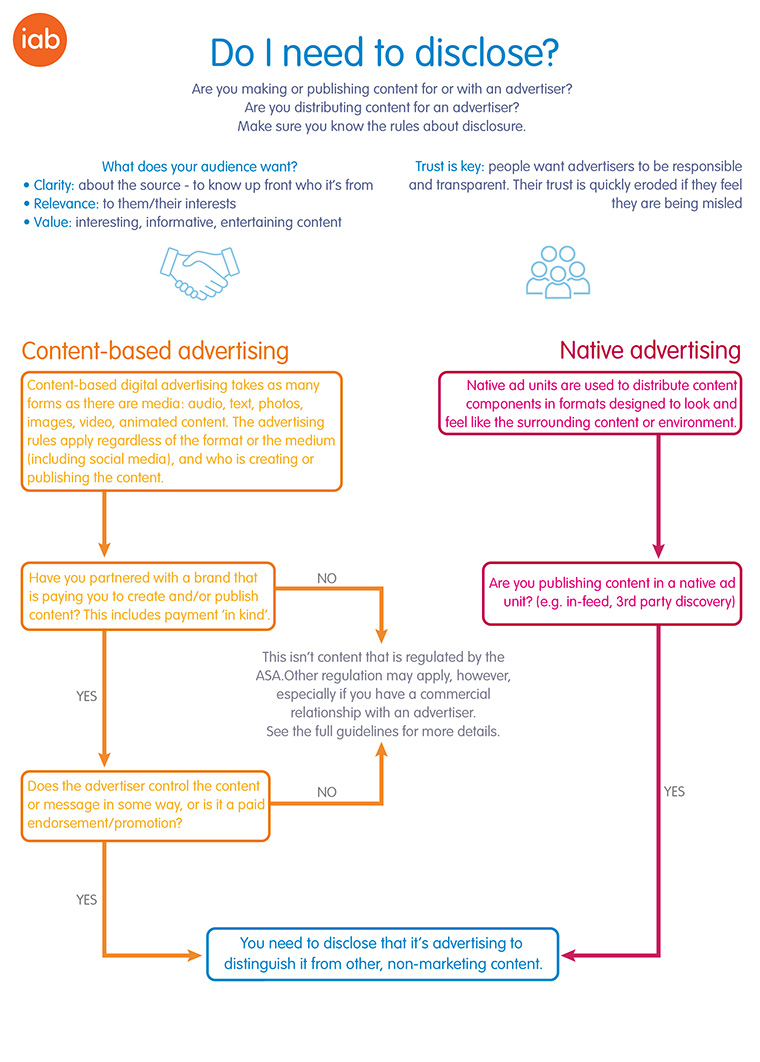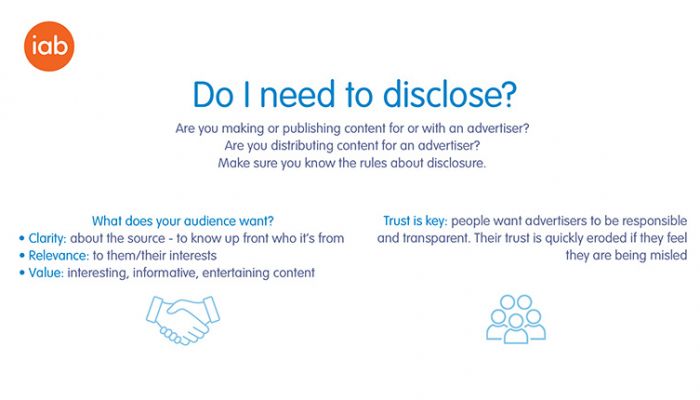Do you find collaborations and ad disclosure confusing?
Blogging collaborations and advertisement disclosure is a huge topic in the influencer industry, with many still confused about best practice and how to get it right. With penalties for getting it wrong, now is the time to refresh or learn best practice for all digital collaborations.
The rise of social media advertising, influencer marketing and ease of self-publishing, has led the Internet Advertising Bureau (IAB) to release refreshed guidelines to help all those in digital advertising understand their responsibilities for online advertising.
The guidelines cover three main areas of content and native advertising: brand-owned advertising; publisher hosted and/or made content (either advertiser controlled or joint advertiser/publisher controlled); and native distribution ad units (formatted ads that are populated with different types of content across the web).
The guidelines do not set out the rules, but help individuals and organisations comply with the CAP Code, which is enforced by the ASA.
The IAB has created a flow chart to help everyone understand if disclosure is needed:

The key guidelines are all about making advertising clear and obvious to consumers:
- Provide consumers with visual cues, or verbal brand mentions in audio formats, so consumers immediately know that they’re engaging with marketing content
- Brand logos and design features (such as fonts or shading) should be used for native ad units that clearly distinguish them from surrounding editorial content
- Use a clear, up front label and/or verbal descriptor (as appropriate) to show there’s a commercial arrangement in place and identify the content as marketing (One option where space is limited (e.g. in social media) is the label #ad)
- Take visibility into account and design disclosures so that they are clear and prominent in different formats and devices (e.g. on mobile and in-app as well as desktop)
- Ensure the content of the advertising adheres to the CAP Code and all other relevant legislation
When paying for content and adverts, no brand should be trying to hide the true nature of the relationship. Sneaky advertising creates a reputation of distrust among consumers, which in turn leads to confusion and misinterpretations of the influencer industry – and also punishes earned media from hardworking PRs.
Christie Dennehy-Neil, Senior Public Policy Manager at the IAB, said: ‘Transparency is vital, not just because it’s required by the advertising rules, but because it is key to audience trust, which is so important for brands and anyone they partner with to create or publish advertising content.’
The IAB’s guidelines, therefore, not only allow everyone to follow the proper legal requirements, but also help improve the industry for all stakeholders, including the brands and businesses that advertise.
You can download the full guidelines here.





Leave a Comment